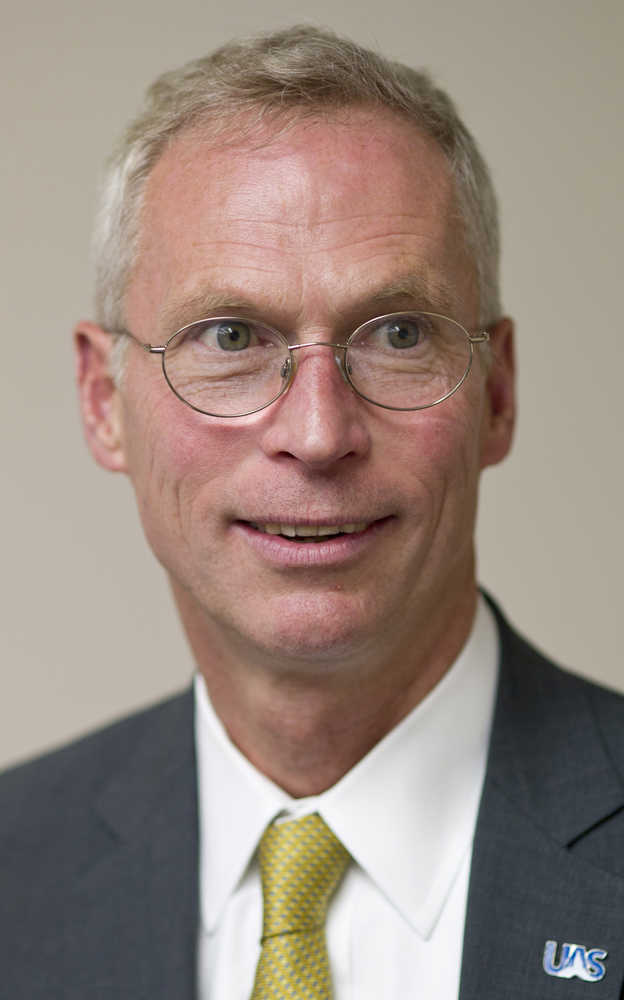The House subcommittee on the University of Alaska budget accepted a smaller cut than the one proposed by Rep. Tammie Wilson last week, but rejected all efforts to reinstate funding for anything else.
Late Wednesday evening the committee chaired by the North Pole Republican recommended a total state general funding level of $300 million, up from the $288 million she put forward last week.
It’s still a cut more than twice the size of the cut in Gov. Bill Walker’s budget, which proposed $335 million. UA received $350 million in this year’s budget.
Including designated funds for the university system, federal dollars and other funding, the total UA budget will be $874.9 million. The University of Alaska Southeast’s Juneau campus will receive $43.8 million in total funding, down $714,800 from the current year. UAS’ Ketchikan campus will lose about $50,000 in funding, while its Sitka campus will lose just over $28,000.
The $288 million figure suggested by Wilson for discretionary funding only covered what UA determines to be “student instruction,” not research or any additional services, like the UAF Cooperative Extension or the University Fire Department.
The $12 million the subcommittee added back in Wednesday night won’t come close to replacing even research, UA President Jim Johnsen said.
He said the research budget alone is about $25 million, but that it brings in “more than four times that” in matching grants.
But just what will go under any budget won’t be decided by the Legislature. The Board of Regents have the ultimate say in how the cuts will be doled out, and Johnsen said work is already being done on various funding scenarios.
“We wouldn’t be responsible if we weren’t looking at contingencies,” he said.
So things like research, the fire department, the Museum of the North and UAF’s Cooperative Extension will likely be funded, at least in part, but will come at the expense of something else, he said.
It was a point that stung with the subcommittee’s two minority Democrats, who ran multiple amendments to reinstate either large chunks of funding or piecemeal programs.
“I’ve heard tonight, ‘Well, geeze, they can designate how they spend their money.’ That’s very nice, but there’s not enough money to go around,” said Rep. Andy Josephson, D-Anchorage. “I have never, in my life, seen such credible responses to the question of ‘Why do you need that research money?’ Boy, I feel badly for those professors and their students.”
Rep. Adam Wool, a Fairbanks Democrat whose district includes UAF, put forward a handful of amendments aimed at restoring funding for specific programs that fell outside Wilson’s original proposal.
The amendments included one to reinstate $1.4 million for the Museum of the North and another to replace the $750,000 for the fire department.
Wilson was critical of the amendments for specific programs because she said it’s ultimately up to the regents to decide how the money is spent.
Wool shot back, saying that wasn’t the message she sent when she proposed to only fund student instruction last week.
“You parsed it out so I’m going to parse it back in,” he said. “It’s just reinforcing my point that I don’t believe we should be cutting the university as much as we are. I think it’s detrimental to the university, to the state and to the community.”
As for the fire department in particular, Wilson noted that she was “not worried that they will not be able to get the funds that they need” because the department also draws money from its fire service area and the Fairbanks North Star Borough.
Every single amendment, including both of Wool’s related to the fire department and museum, was shot down along caucus lines, only garnering yes votes from Josephson and Wool.
The Republican-led Majority Caucus members — Wilson, with Reps. Paul Seaton, R-Homer, Liz Vazquez, R-Anchorage, Jim Colver, R-Palmer, and Neal Foster, D-Nome — stayed together on fending off any attempts to lessen the cut.
The subcommittees don’t take public testimony, but the room was packed with students and faculty Wednesday night. Some offices reported receiving more than 800 emails over the past few days with nearly unilateral support of the university.
The budget recommendation now heads to the House Finance Committee, which does take testimony on the budget, and then to a vote on the House Floor before heading to the Senate. The final number will ultimately be decided in a conference committee near the end of the session.
The Senate has already began work on the budget, with the Senate subcommittee on the University of Alaska budget holding its first meeting Wednesday afternoon.
The subcommittee, chaired by Sen. Pete Kelly, a Fairbanks Republican who worked for a number of years at UAF as its director of state relations, seemed more receptive to the university.
“Here you’ll probably be treated better than you have been in this building over the last few weeks,” he said to Johnsen.
The Senate subcommittee’s next meeting is planned for Monday.
• Juneau Empire state reporter James Brooks contributed information about the University of Alaska Southeast to this report.

